Each new dairy generation adds a chapter to the “home farm’ story. Mistyglen Holsteins, a 42 head tie stall herd, was started by Murray and Betty Pettit in Elgin County, near Belmont, Ontario. Today the 265 acre dairy farm is run by their children Suzanne and Tom. The brother sister dairy operation not only continues the Pettit family story, they’ve got it documented as well! Although it isn’t showing on Reality TV or at your local cinema (yet), Mistyglen has had the foresight to capture their story for posterity in YouTube clips and pictures!
Sibling Makeover at Mistyglen: Responsibility and Review
The move from one generation to another on any farm is something that presents a lot of challenges – personal, logistical and financial. For the Pettit’s each step was given careful consideration and obviously began long before the two offspring came home after finishing their educations. Suzanne picks up the story, “When we graduated from Ridgetown College in 1999, we began the process of assuming responsibility for day-to-day operations.”
 Responsibility and then Review were the first priorities.
Responsibility and then Review were the first priorities.
“Simply put, we were out of room. Dry cows were being forced to stay in a small barn with anything from yearlings on up. Making quota in the summer without swinging cows was difficult on pasture, dealing with the heat and the environment. After returning from college, we added a high moisture corn Harvestore and a silo for haylage but dry hay/pasture in the summer and corn silage comprised most of our feed.” These changes and others brought them to the same conclusion. “Although we made many changes in feed and management, we had reached the maximum potential of that system.”
From Family Ties to Robots in the Family
It’s one thing to know that change is needed. It’s another thing entirely to know how to carry it out. The Pettits were thorough. “We looked at everything. Initially, we thought about expanding the existing tie stall barn. Taking into account the expense of having to alter our manure management, and the fact we’d still be limited in our feeding options, it didn’t make financial sense to add on to the old barn. We then considered building a new tie stall and visited several in the area. Although that was appealing to us for the ability to see and interact personally with the animals, it seemed like we wouldn’t be taking a step forward. Then we thought about a parlor, but having been involved in tie-stalls all our lives, it wasn’t an attractive option.” Both Pettits are open about their learning curve. “Robotic milking was something we mocked early on in the process, but as we began exploring and researching, we found it held a lot of positive attributes for our particular situation.”
Siblings Push the Robotic Button
When it comes to pushing each other`s buttons, Suzanne and Tom have taken it to a whole new non-sibling-rivalry level. The buttons they push are robotic. “On May 15, 2012, we started milking in a 70 ft by 240 ft, 3-row freestall barn with a DeLaval VMS robot. It is a free traffic system, with 67 freestalls, and box stall space for dry cows and calving pens. It is cross ventilated with climate controlling curtains, three 24 foot fans, automated alley scrapers, a hanging brush and a built-in footbath. The stalls have Legend mats and are covered with chopped straw. The old tie stall barn has been converted into heifer pens.”
Pettit’s Choice Awards
Before committing to the exact robotic system they would use, Suzanne and Tom did their homework. “Given our size, we only required a single robot, so Lely and DeLaval were our main options at the time. We went to Open Houses and then did a tour of several DeLaval units. We eventually decided on the DeLaval because a) our tie stall equipment had been handled by Norwell Dairy Systems as well and we were very happy with their service, and b) it was possible (at the time) to purchase a used model that was fully upgradable. The robot met our needs for a number of reasons. Tom’s wife Kris works full-time and with two young daughters (Madison, 8 and Kadie, 5), he wanted more freedom to attend their activities that inevitably occurred during milking. We were also intrigued by the prospect of getting more milkings per day and the potential increased production.”
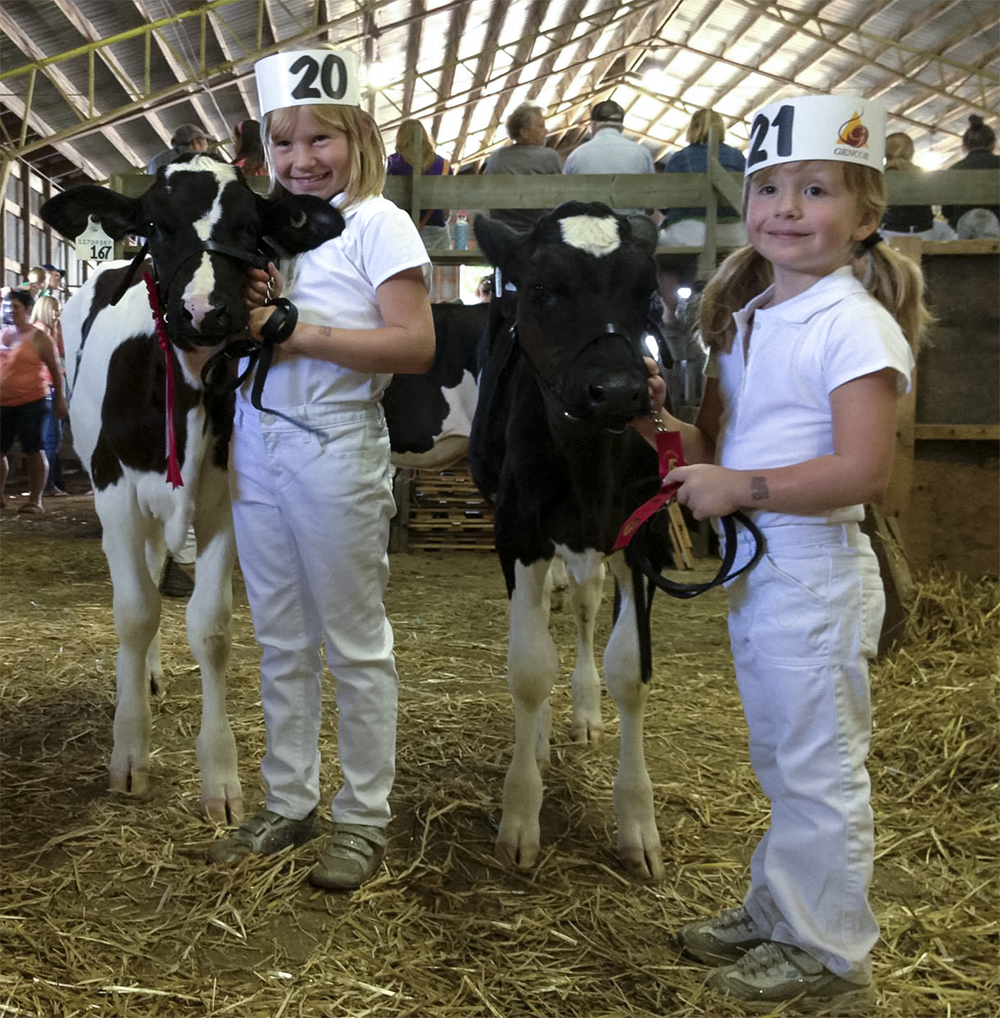
The next generation at Mistyglen showing at Aylmer Fair
Mistyglen Gives A Whole New Meaning to “It’s Show Time”
It’s easier than you would think for people interested in the Mistyglen robotic experience to see the “big picture” so to speak. Not only are they using technology to milk their cows they use it to talk about them. “Social media has played an interesting role in our development.” says Suzanne and goes on to explain. “We created a Facebook page mainly to have a place to track the progress of construction of the barn for our own purposes, and found that many people were curious about our plans and the changes we were making. It’s a great way to interact with other breeders and people who are in the same position we were in a couple years ago, and we’re happy to assist anyone looking for advice or ideas. We documented the building process in pictures from the ground up so anyone can scroll through our old albums. While we’re not famous for our cows (yet), we have created a much greater following than we would have anticipated and it’s a fun aspect of the journey.”
Robotics Zoom In on Production
At the end of the day everyone wants to know how robotics actually perform for Mistyglen. Suzanne reports. “Numerically, the changes have been astounding. Our BCA in May 2012 was 213-202-214 with a standard milk of 32.6 kg. 15 months later, we are now at 246-292-251 with a standard milk of 40.1 kg. Our pregnancy rate has increased, I believe due to activity monitoring and the consistency in environment and diet. The cows are generally less stressed milking an average of 2.7 times/day. During the hottest week of this summer, our cows actually climbed a kg/cow. With the ventilation and big fans, the heat of summer is now a non-factor.”
Mistyglen Feed and Feedback
Change is an ongoing phenomenon at Mistyglen says these dairy managers. “The other major change we were able to make was to switch to a TMR. We now know our cows are getting a much more balanced and consistent feed, which has helped production tremendously. We added an OCC (online cell counter) to our robot and it is a tool we recommend. Knowing SCCs after every milking is very useful and allows us to be proactive about mastitis and possible sickness.”
The Sibling Outlook at Mistyglen
Of course, it’s clear that the status quo will never be the option of choice for these two. Suzanne outlines their aspirations. “Our goal is to eventually reach Master Breeder status. It’s still a ways off but we are slowly developing some homebred cow families. We generally breed for type first, preferring cows with good width and depth of rib, strong udder attachments and good mobility with an increasing eye on health traits.” Tom rounds out the current picture. “Very little has changed in our breeding philosophy since making the move. We pay more attention to Rear Teat Placement and Teat Length, but other than that, criteria remains quite similar.
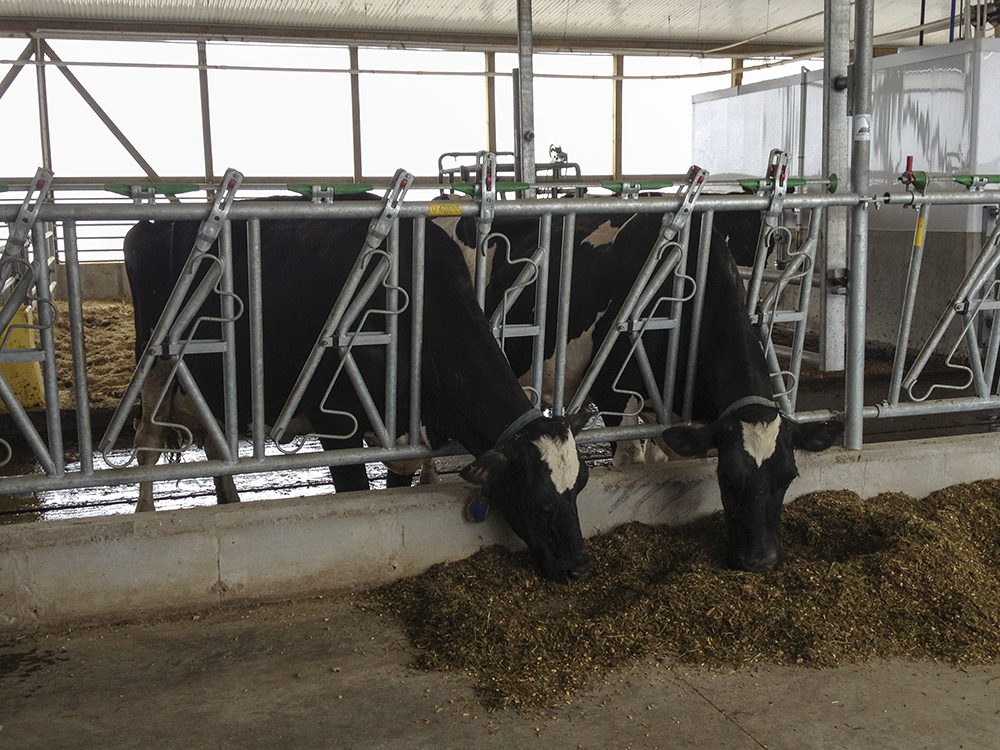
Mistyglen Jetta Blockbuster and Mistyglen Kweens Throne, the morning they both moved to EX-4E.
Moo-Vie Stars from Mistyglen
Of course, the real stars of any dairy story are the cows. Suzanne talks of favorites. “Probably the best cow we’ve ever bred is Mistyglen Jetta Blockbuster (EX-92-4E). Tom Byers made her our first ever Excellent in May 2009. She was recently raised to 92 points and was the 2nd place mature cow in this year’s Elgin County Breeder’s Cup. Her sire, Cityview Blockbuster, is a Leduc son of the great Shoremar S Alicia (EX-97) that we used as a young sire. While he didn’t return to service, he left us with a beautiful foundation cow. Jetta has daughters by “Dempsey”, “Throne”, “ReDesign” and “Marino”, as well as “Goldwyn” embryos due in the fall. She is nearing 70000 kgs for lifetime production and is bred back to “Dorcy”.”
Siblings Stick Together to Make a Difference
Youth is on their side and the Pettits keep a balanced eye on the future. “Being 35 and 33, we feel our career is just getting started, but the shift from tie-stalls to robotics, and the growing divide between “commercial” dairymen and “breeders” has been evident over the last 15 years. We are trying to enjoy the best of both worlds.”. “In the dairy industry, we aspire to the consistency of herds like Quality and Ebyholme (Read more: Quality Holsteins – Well-deserved Congratulations, Quality Cattle Look Good Every Day and Ebyholme – The End of an Era) To carry out that process, Suzanne and Tom have purchased foundation animals from both these herds with a view to achieving Mistyglen’s goals. “There is still room in this industry for breeding long-lasting, true breeding families that can produce in any environment.”
 Pettits See the Future – Precision Management
Pettits See the Future – Precision Management
With their picture- documentary recording their experience of converting to robotics, the Pettits are enthusiastic about the future of this technology. “Robotics is going to continue to expand and be integrated into more milking systems. Advancements like the Herd Navigator will continue to increase the amount of information available to a producer as farming becomes less and less physically demanding and more about management.” Both Suzanne and Tom enthusiastically encourage others go this route. “If you are considering a robot, talk to as many robotic farmers as you can and get out there and see different barns. Robots seem to be most effective in new construction, so look carefully at your barn design and ensure it fits your needs now and in the future. Be aware of the costs of operation and the potential pitfalls. If you think because you have a robot you can ignore your cows, DO NOT get a robot. Management is crucial to success with this technology.”
Making Moos, Moves and Movies – Show and Tell!
From camera updates, to regular robotic monitoring the Pettits find that things are clicking right along at Mistyglen. “Jumping into this transition to robotic milking may be our greatest accomplishment (so far) because we believe it will lead us to many of our goals. It was a great financial risk, but one that is slowly but surely paying off. We are purchasing quota every month, and we will eventually have this barn at capacity of 55-60 cows.”
The Bullvine Bottom Line
The final cut of Mistyglen story is far in the future for these enthusiastic dairy producers. “There is still much room for improvement in production, and many tweaks to be made to increase feed efficiency and visits to the robot, and breeding goals to accomplish.” Nevertheless, for Suzanne and Tom Pettit Mistyglen is always ready for, “Lights, camera, action!”
Get original “Bullvine” content sent straight to your email inbox for free.

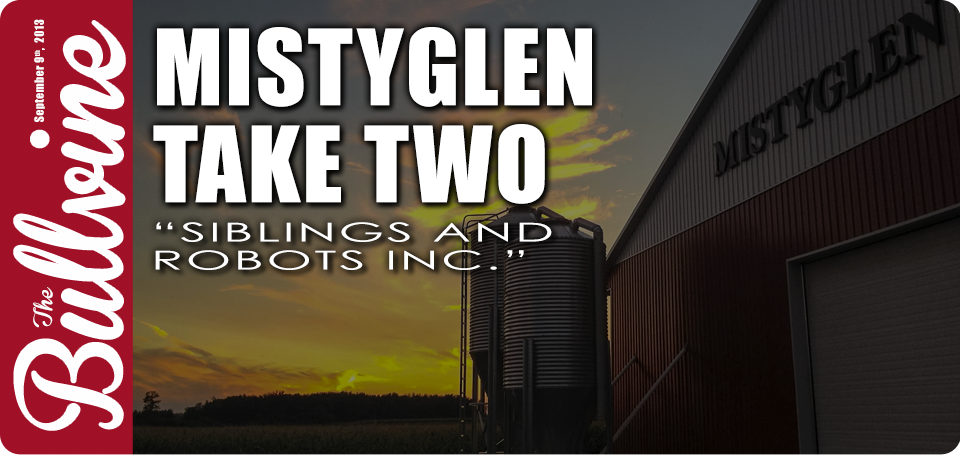






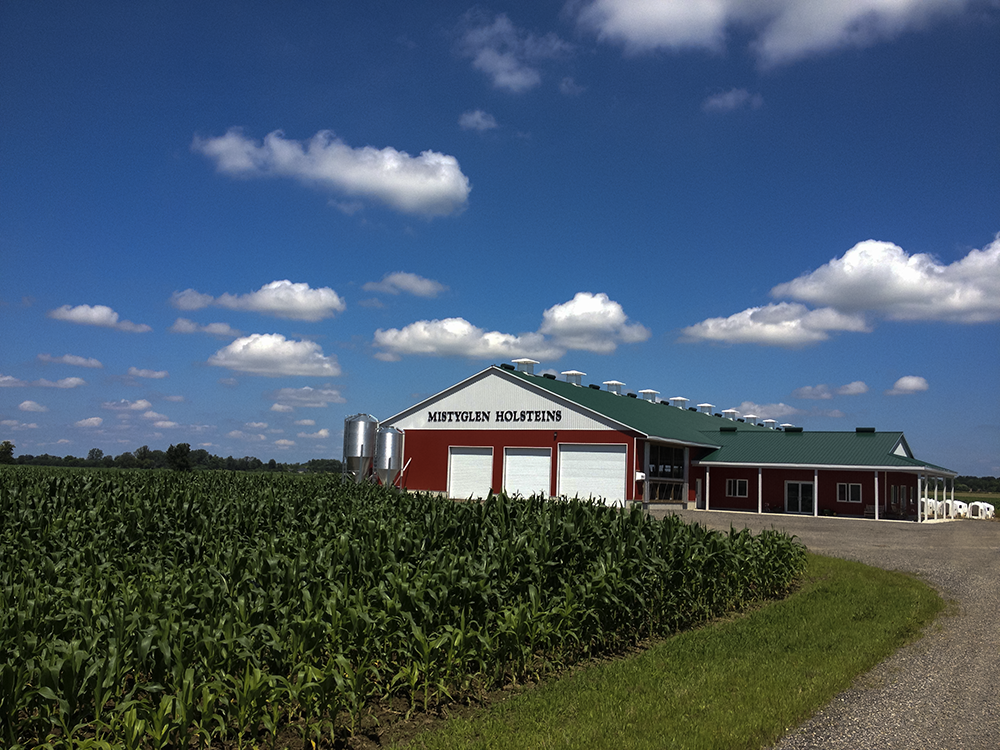
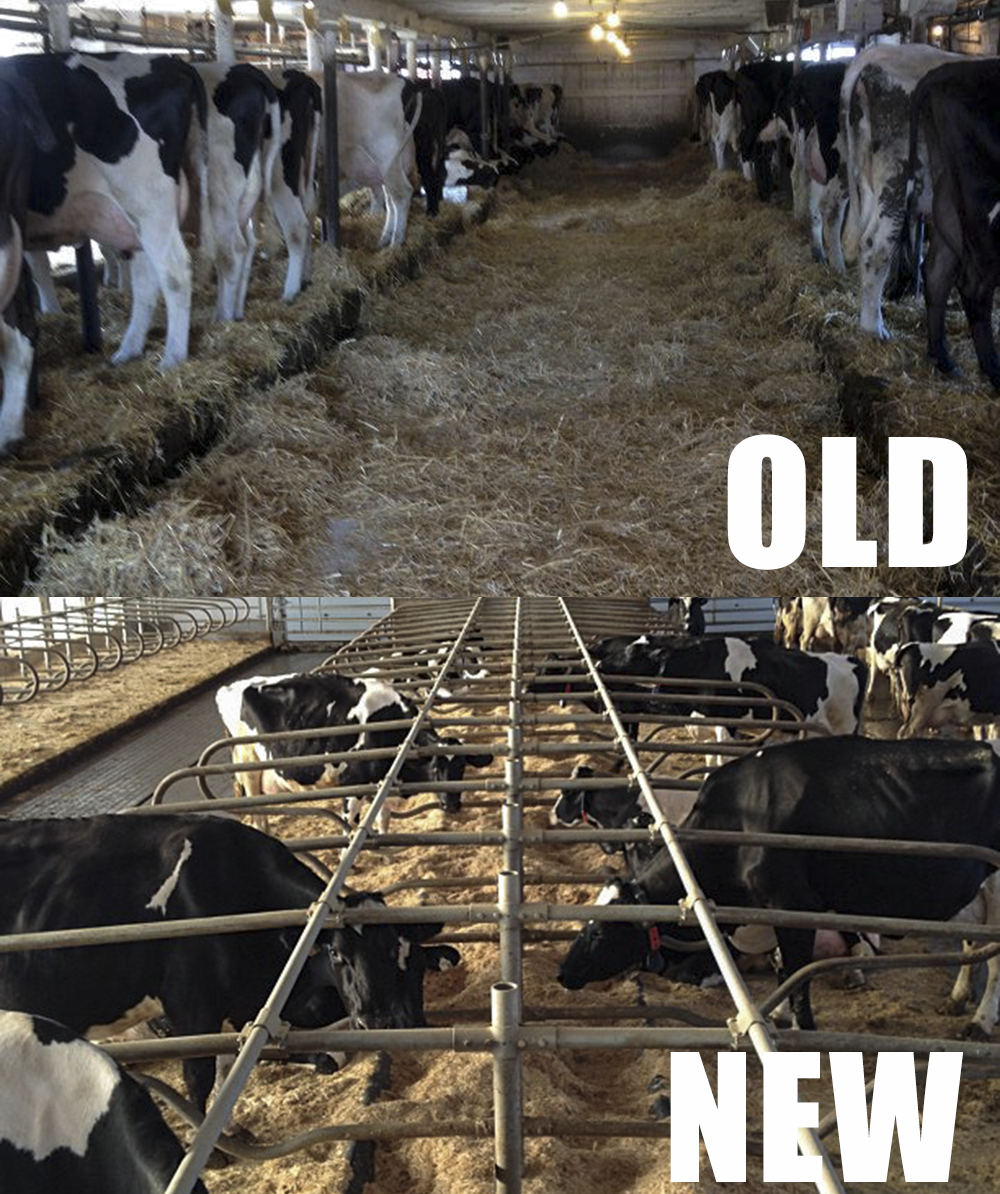 Responsibility and then Review were the first priorities.
Responsibility and then Review were the first priorities.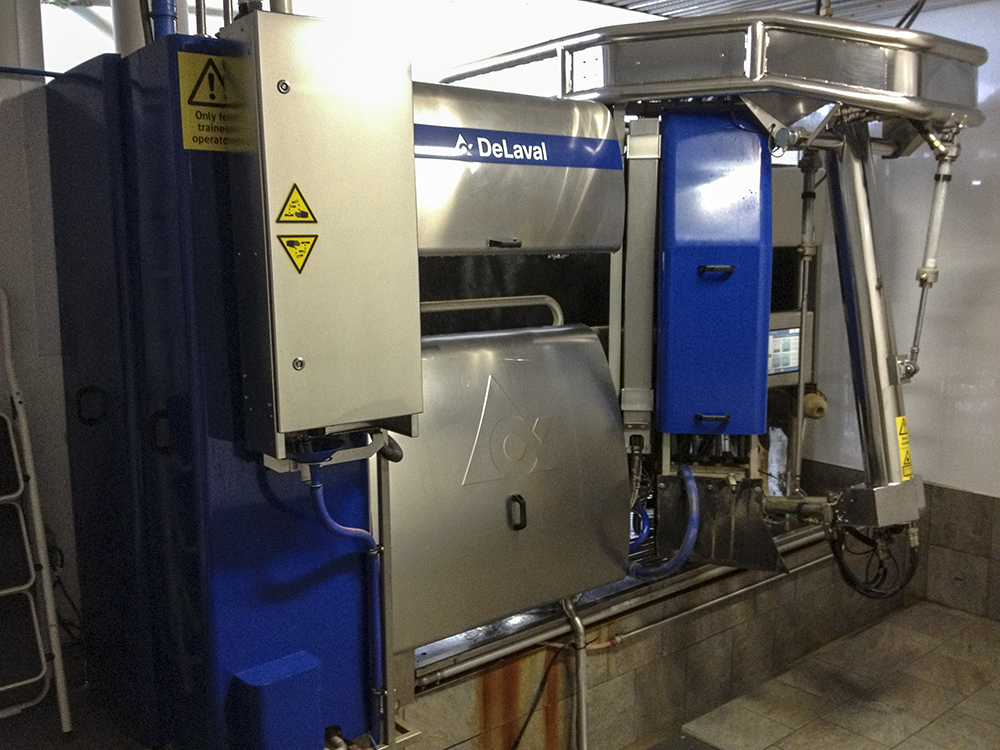
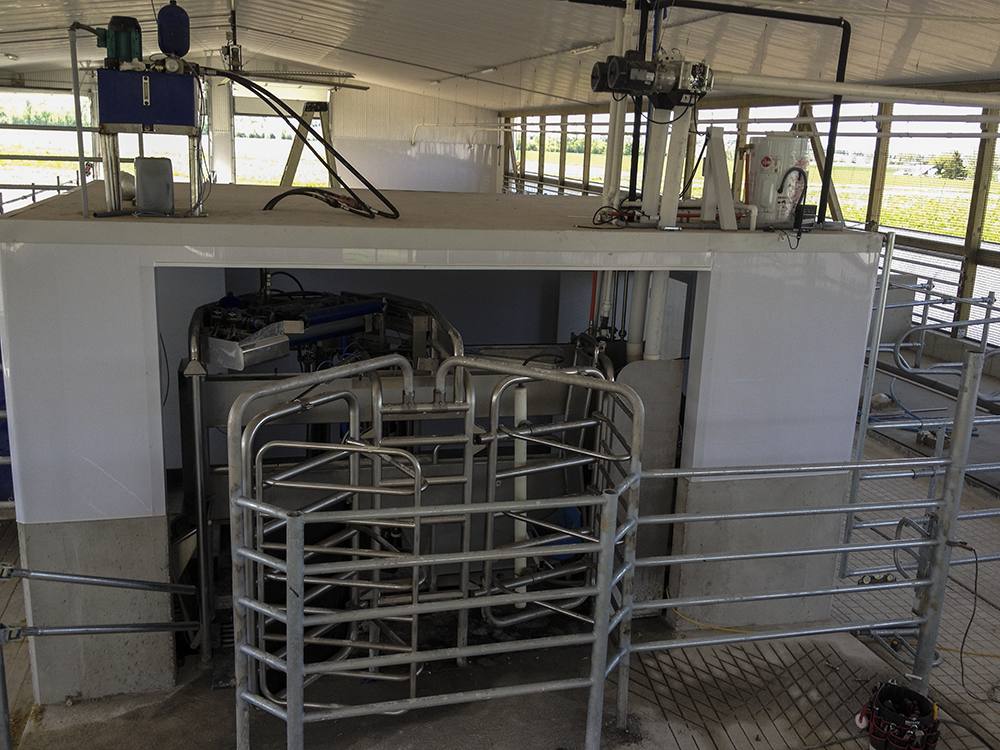
 Pettits See the Future – Precision Management
Pettits See the Future – Precision Management









Leave a Reply
You must be logged in to post a comment.